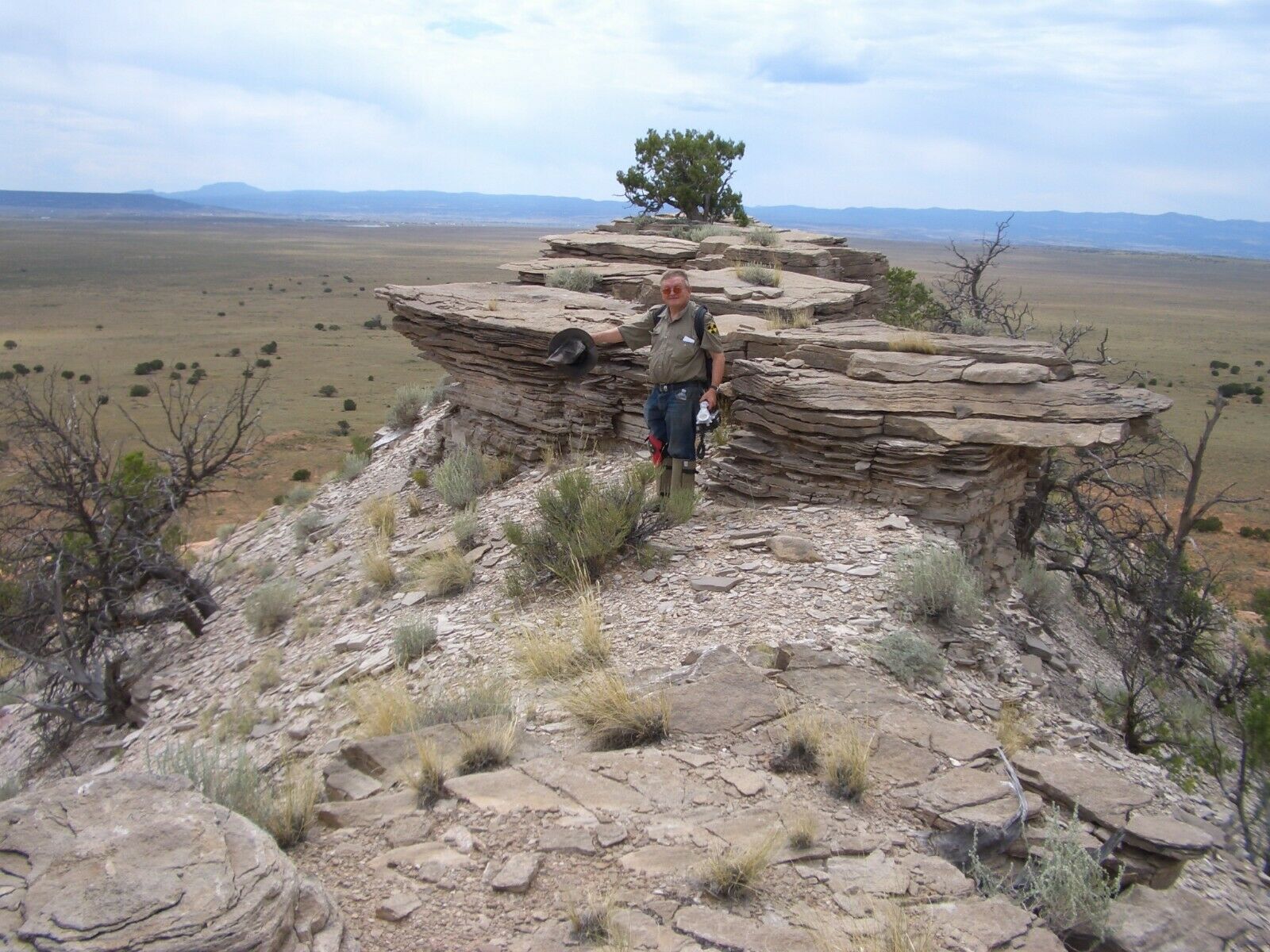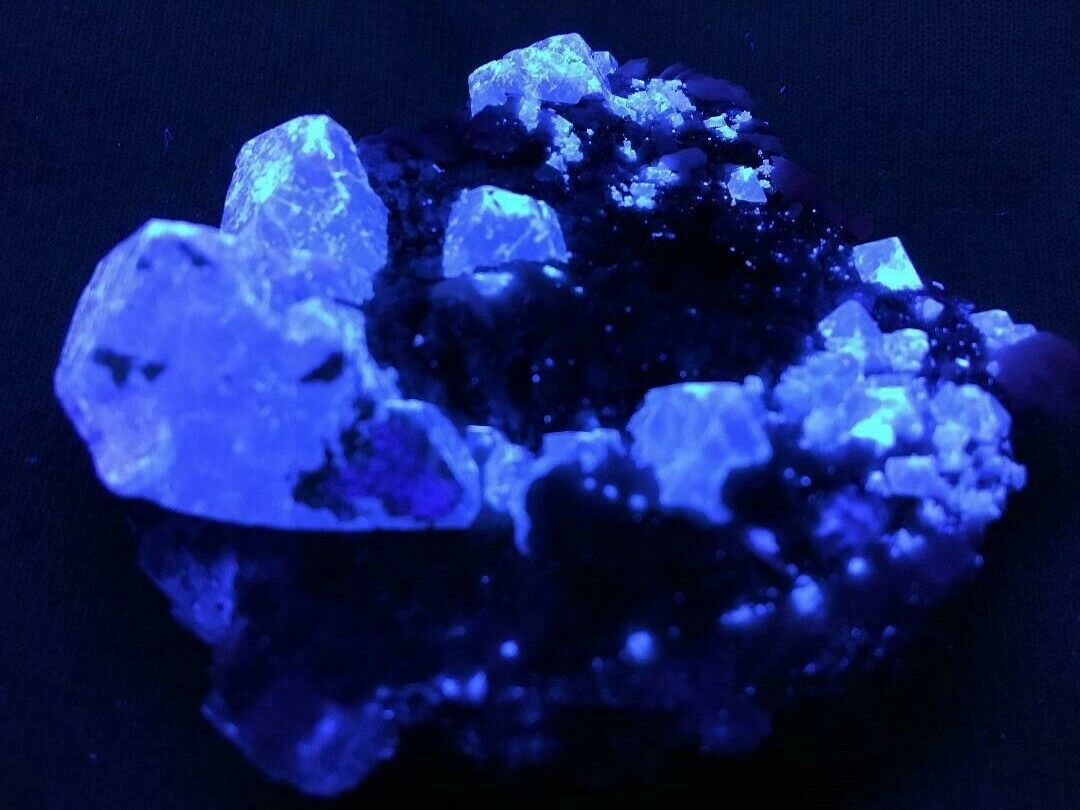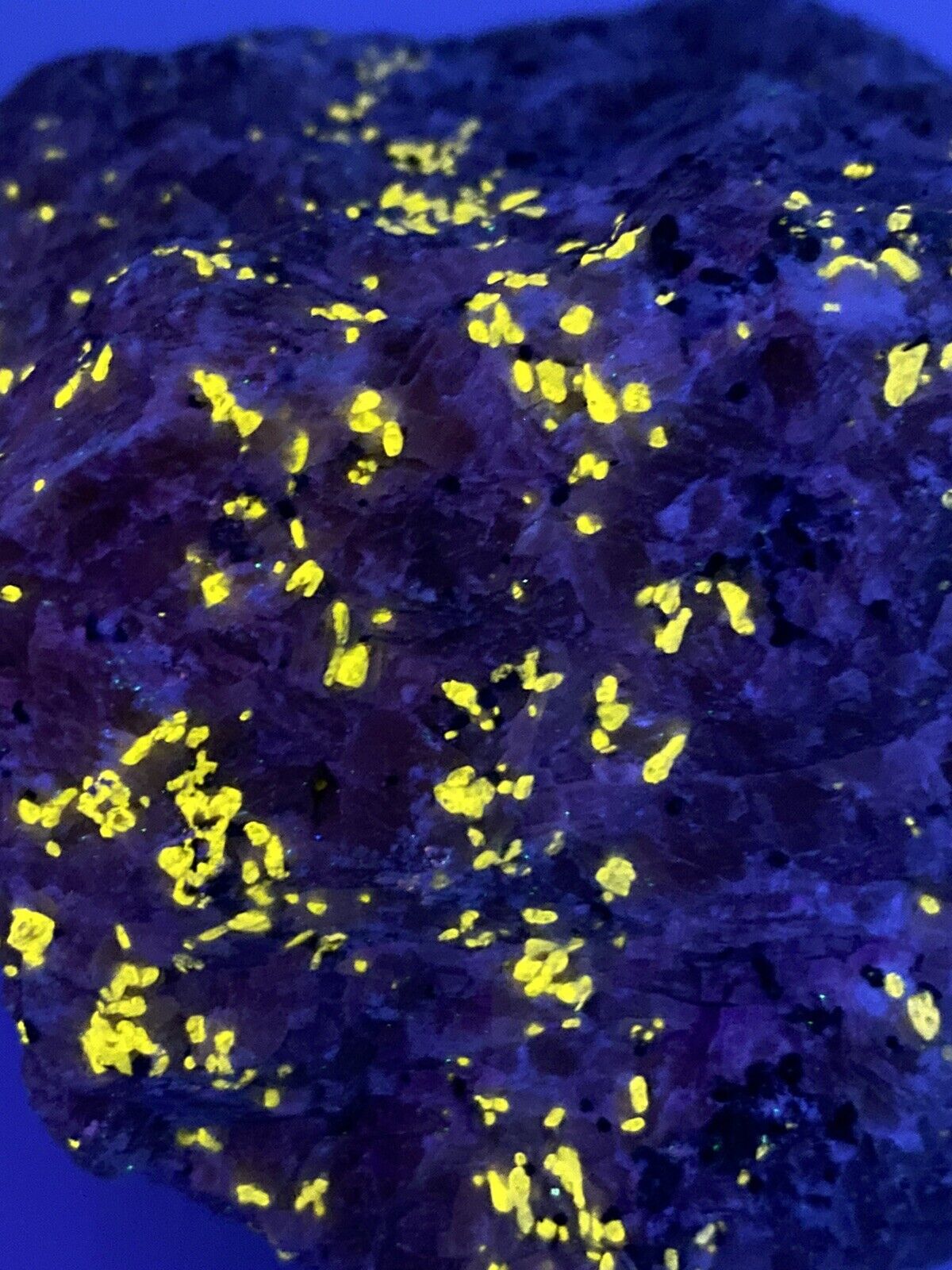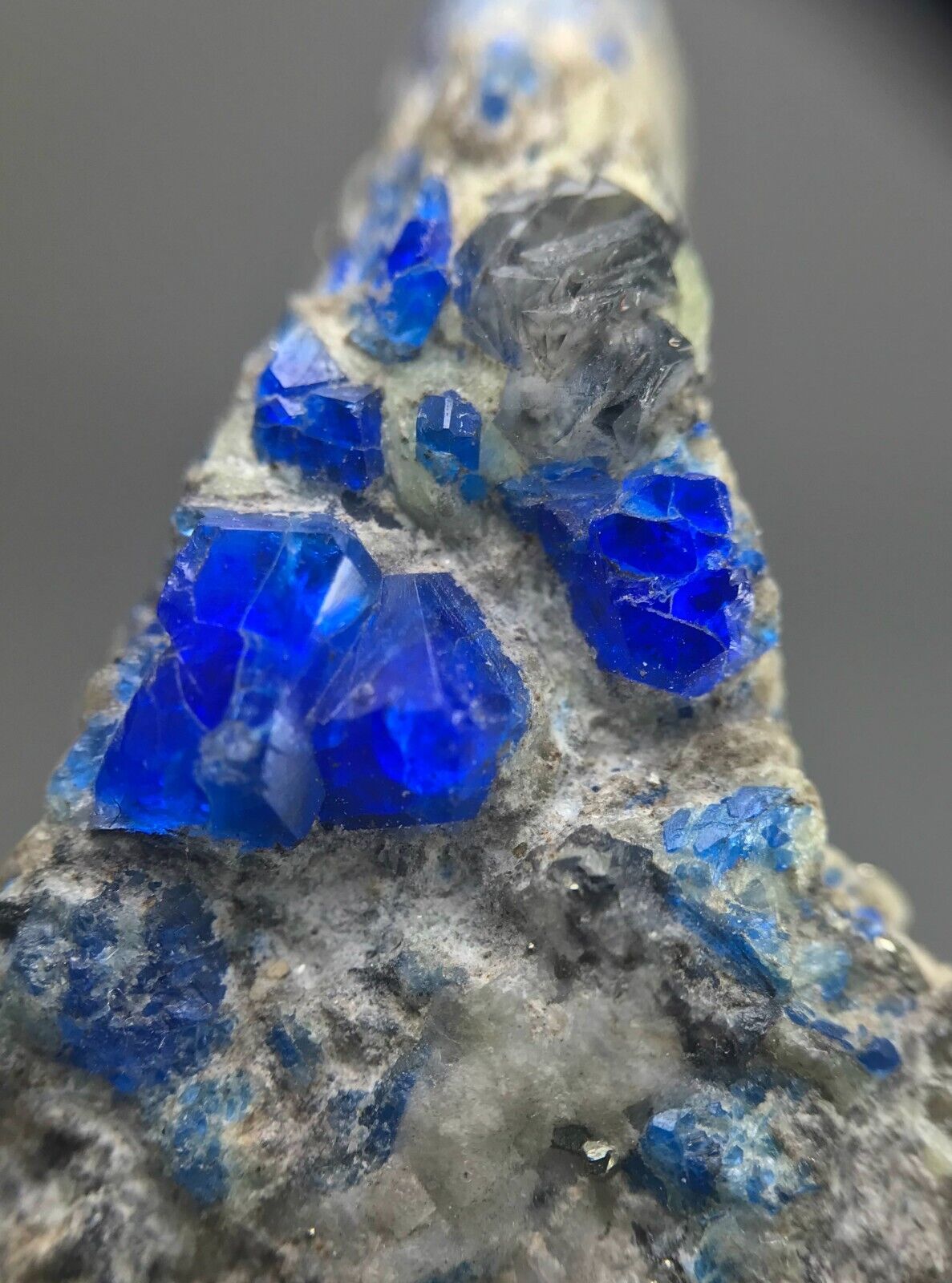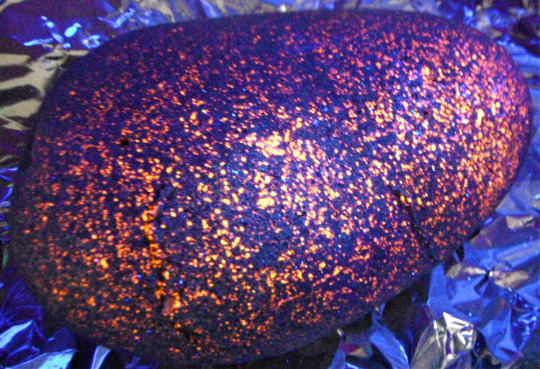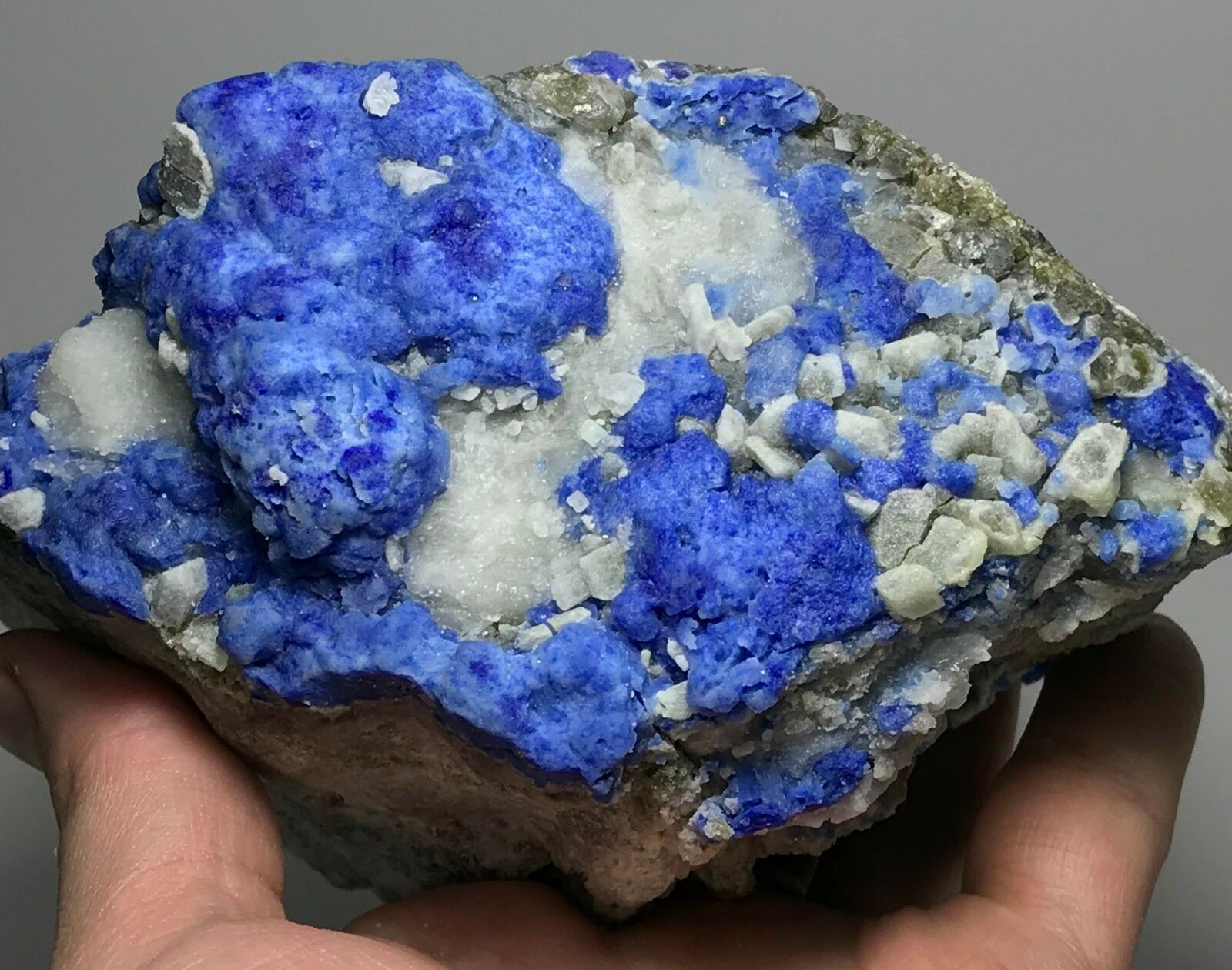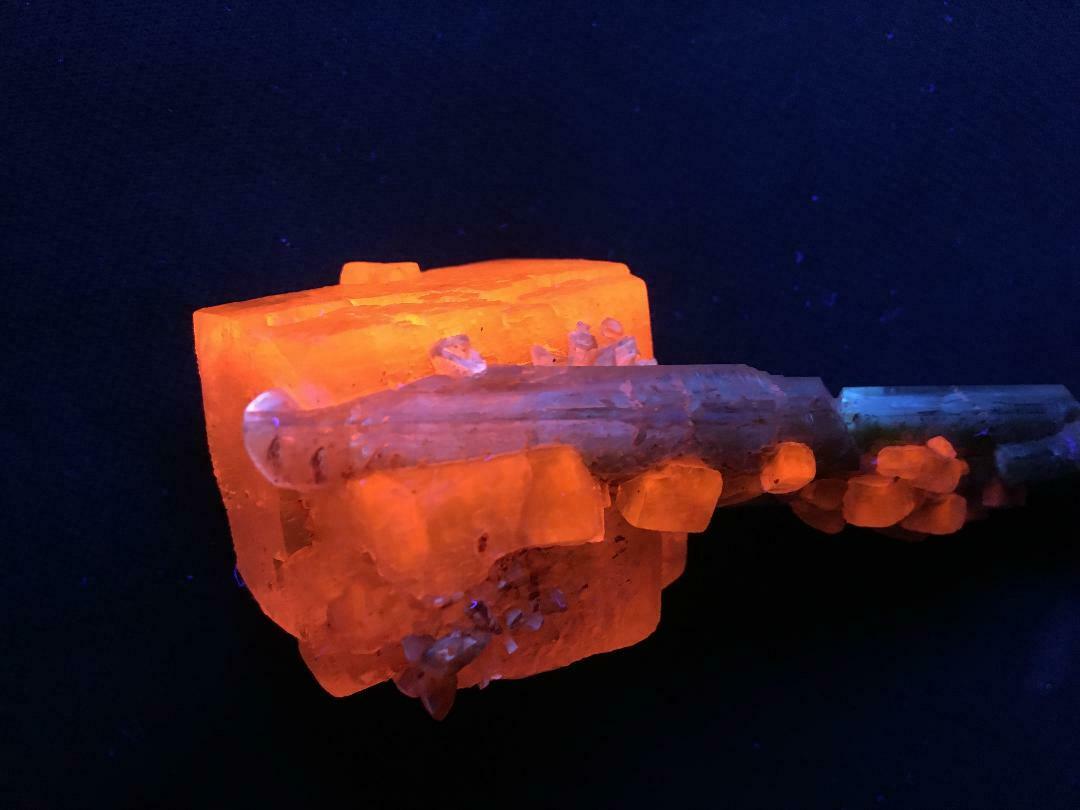-40%
Scapolite - Franklin, NJ
$ 4.22
- Description
- Size Guide
Description
A representative example of fluorescent scapolite. This is a representative example of scapolite and most likely the meionite member of the scapolite group. The scapolite is a pale gray with a dull luster, and it makes up most of the matrix. Meionite is a calcium aluminum silicate carbonate. Scapolite was named in 1800 by José Bonifácio de Andrada e Silva from the Greek ζκαποζ meaning "a shaft" in allusion to the long prismatic habit of the crystals. It is a member of the scapolite group and part of the marialite-meionite series. This term generally refers to just the marialite-meionite series, not the entire scapolite group, so it excludes the sulfate-bearing group member silvialite. The term scapolite is used as a generic term when the exact chemical composition in the solid solution series has not been determined. The meionite component increases with metamorphic grade, and typical samples of high-pressure scapolite are Ca-rich. There are several scattered sections of orange-yellow, sub-vitreous garnet. There are numerous spots and speckles of gray willemite throughout the matrix. Lastly, there are a few minor spots of white calcite throughout. The scapolite fluoresces a moderate, deep cherry red, the willemite a bright green, and the calcite a bight red under shortwave (254nm) ultraviolet light. The scapolite is non-fluorescent under mid-wave (302nm) and longwave (365nm) ultraviolet light. A representative example of a widespread but overlooked mineral species.Dimensions are
8.5x3.8x2.6cm - 3¼x1½x1in.
Please note the centimeter cube and inch bar for scale.
Weight in grams and ounces:
103.2g - 3.64oz.
From Franklin, NJ.
The previous collection this specimen was is #52, Mark Boyer.
#52 is the museum's Collection Sale number previously offered in the museum shop.
>>> We do
COMBINED SHIPPING
for multiple items. To
request
an invoice from us that combines shipping
ALWAYS
, click the
Add to cart
button on eBay to add items until you are done.
DO NOT PROCEED
to checkout; instead, click the
Request Total from Seller
button. <<<
=== There is an instructional video on how to request combined shipping is here
https://www.youtube.com/watch?v=FvDe7Fg7R4Q
===
All potential buyers need to be aware that being able to view fluorescent minerals requires an ultraviolet lamp. Most of the minerals from the Franklin and Sterling Hill zinc mining district fluoresce under
shortwave ultraviolet light
.
The shortwave wavelength is
254nm
or otherwise known as
UV C
. Always read the description carefully to determine if the main mineral of interest for a particular specimen will fluoresce.
ALL
fluorescent minerals depicted in our storefront are illuminated by two (2) 9 watt Triple short/mid/longwave AC Model 9SM-110 Way Too Cool LLC ultraviolet lamps, and the shortwave tubes and filters were replaced in late 2018.
There are several available brands and models of ultraviolet lights on eBay and other online sources. For further information on ultraviolet light and fluorescent minerals, copy and paste the following and go to >>>
geology.com/articles/fluorescent-minerals
.
>>>>
We Buy Collections
<<<<
DISCLAIMER: Every reasonable effort was made to identify the mineral species noted in each specimen accurately. The occasional label from previous collection(s) may misidentify some species, and the current title and description here reflect the latest mineral species identification.
A modest effort was made to depict a fluorescent specimen accurately as possible.
In some cases, overexposure should be expected in select photographs to compensate for a fluorescent specimen's weak response.
All buyers should exercise safe viewing practices regarding the use of ultraviolet light. Visual dark adaption is highly recommended in the optimal viewing of fluorescent minerals. Buyers should also be aware of what type of lighting to view the specimens under. This can result in perceived differences of color and contrast due to color and contrast shifting under various kinds of lights available.
All photographs were taken with a Nikon D5300 digital camera with a Nikon DX AF-S 18-55mm lens attached with a UV filter. Lighting was done with a pair of OSRAM 8.5 watt LED A19 5000K 800 lumens bulbs in brushed aluminum reflectors. The photographs were processed on a color-calibrated flat panel monitor. Do note the Imperial measurement conversion is the nearest equivalent to the listed metric measurement.
--- All photographs appearing on this listing or any other Franklin Mineral Museum listing are the property of the Franklin Mineral Museum. Photographs
can be used strictly for personal use onl
y
. Otherwise, the photographs posted here are protected by U.S. Copyright Laws. They are not to be downloaded or reproduced for public use or distribution in any way without the written permission of the Franklin Mineral Museum. ---








